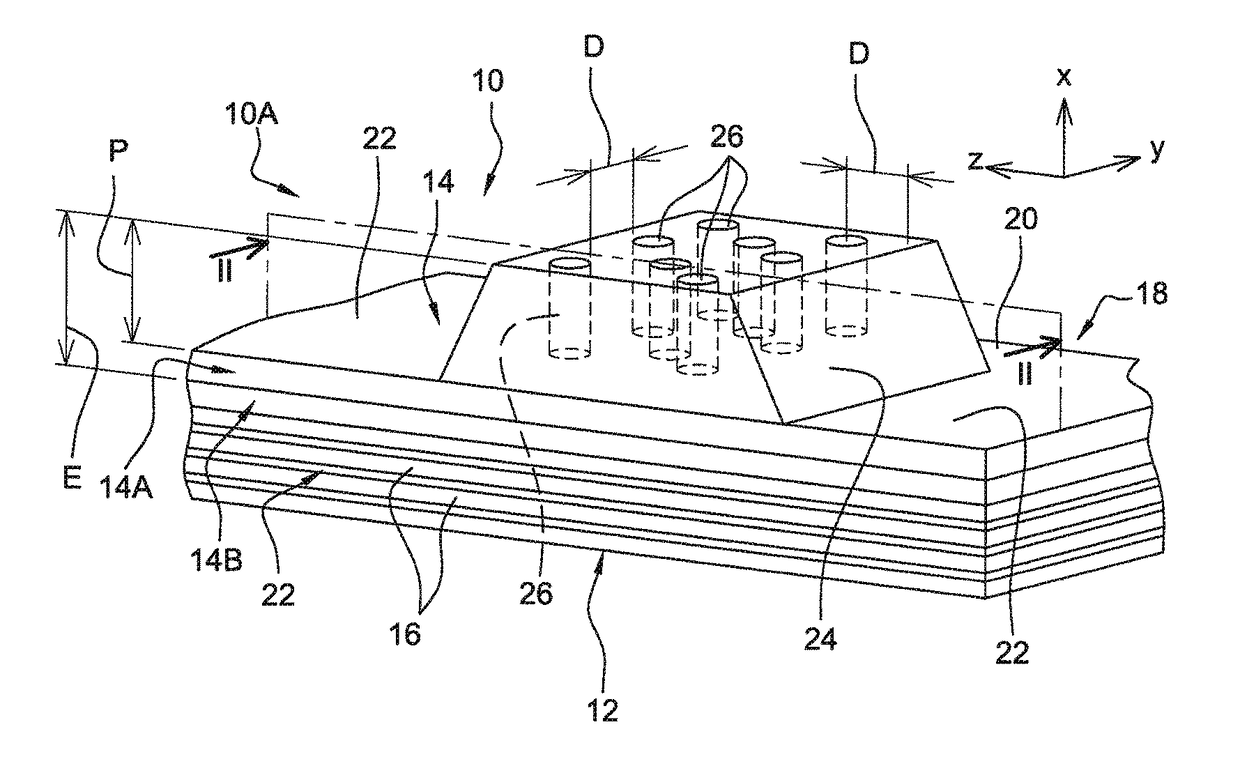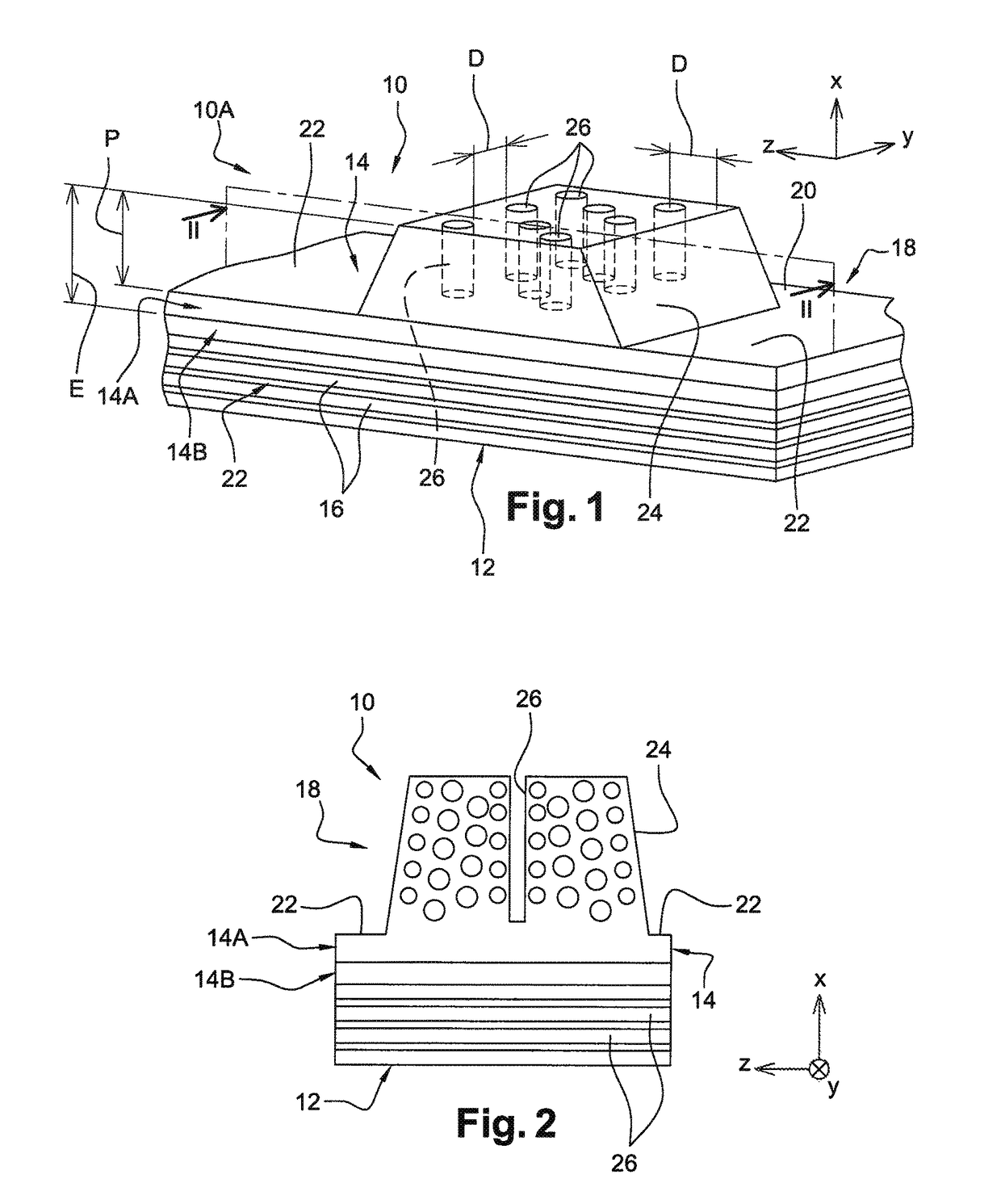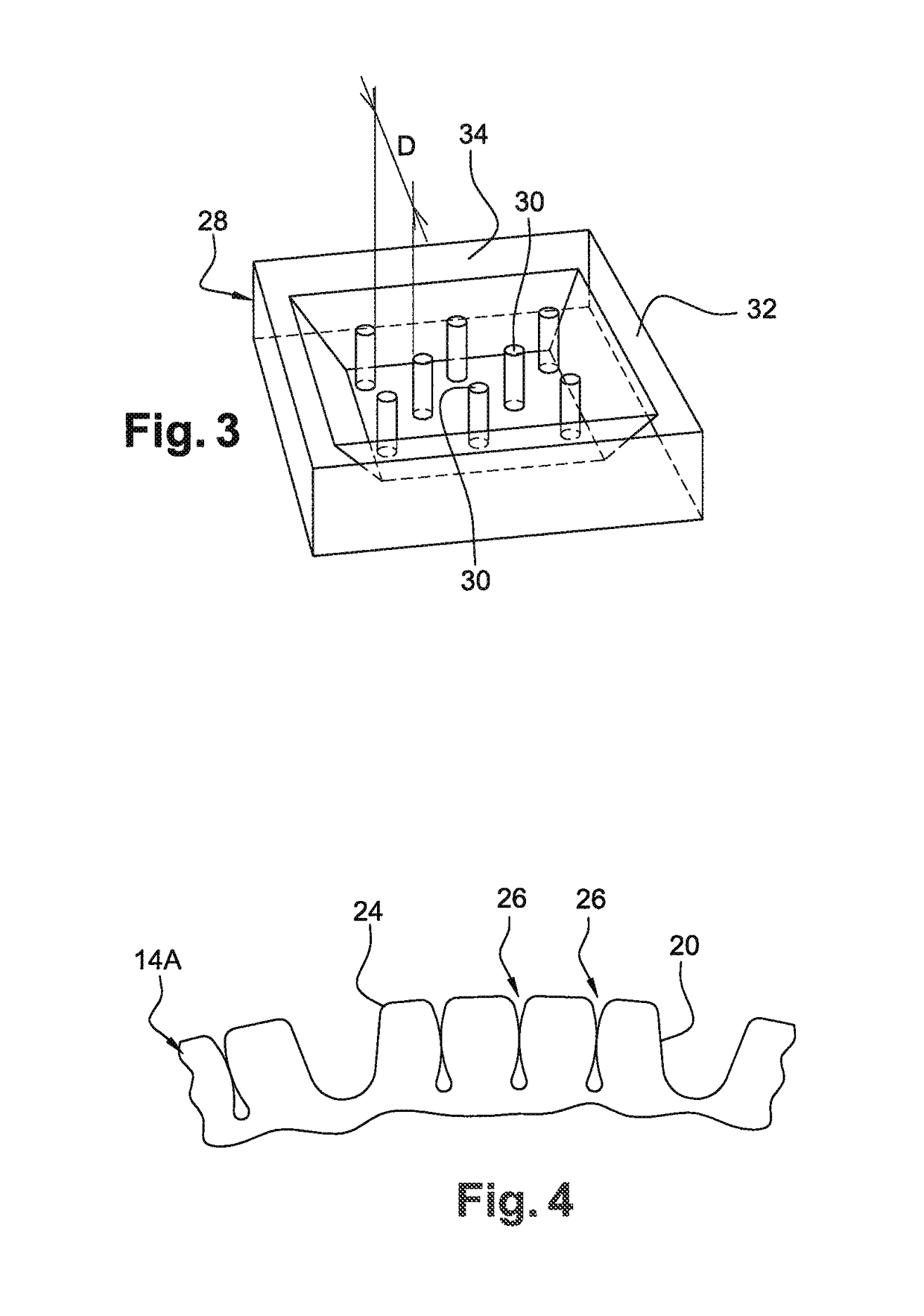Method for producing tire having tread with foamed material and hollow tread pattern elements
a technology of which is applied in the field of producing tires with foamed material and can solve the problems of not being able to achieve the desired performance of tires, and reducing the amount of pore-forming agents. , the effect of reducing the number of hollow tread pattern elements
- Summary
- Abstract
- Description
- Claims
- Application Information
AI Technical Summary
Benefits of technology
Problems solved by technology
Method used
Image
Examples
first embodiment
[0047]Represented in FIGS. 1 and 2 is one part of a tire 10 manufactured according to a process according to the invention. In these figures, the tire 10 has a desired outer contour after its removal from a vulcanization mold.
[0048]The tire 10 comprises a reinforcement layer 12 covered by a tread 14.
[0049]The reinforcement layer 12, known per se, comprises metal or textile reinforcers 16 embedded in a conventional rubber.
[0050]The tread 14 comprises an outer rubber layer, referred to as a running layer 14A, made of cellular material, in which hollow tread pattern elements 18 are made, and an inner rubber layer 14B having a hardness greater than that of the outer layer. The inner layer 14B is therefore inserted radially between the running layer 14A and the reinforcement layer 12.
[0051]The running layer 14A has a thickness E. The material of the running layer 14A has a degree of expansion greater than or equal to 50%. This degree of expansion can be measured using a process and means...
second embodiment
[0074]In FIG. 5, one part of tire 10 manufactured according to a process according to the invention has been represented. In this FIG. 5, the elements similar to those of the preceding figures are denoted by identical references.
[0075]In this case, unlike the first embodiment of the invention, the blocks 24 may comprise at least one blind hole 26 in the general shape of a parallelepipedal slot that opens radially.
[0076]The process for manufacturing the tire 10 represented in FIGS. 5 and 6, according to the second embodiment of the invention, is substantially similar to that according to the first embodiment of the invention.
[0077]However, in the case of the process according to the second embodiment of the invention, the part of the vulcanization mold 28 comprises a molding element 30 of general parallelepipedal shape complementary to that of the blind hole 26.
[0078]The invention is not limited to the embodiments described above.
[0079]In particular, it will be noted that the tread p...
PUM
| Property | Measurement | Unit |
|---|---|---|
| mass | aaaaa | aaaaa |
| distance | aaaaa | aaaaa |
| thickness | aaaaa | aaaaa |
Abstract
Description
Claims
Application Information
 Login to View More
Login to View More - R&D
- Intellectual Property
- Life Sciences
- Materials
- Tech Scout
- Unparalleled Data Quality
- Higher Quality Content
- 60% Fewer Hallucinations
Browse by: Latest US Patents, China's latest patents, Technical Efficacy Thesaurus, Application Domain, Technology Topic, Popular Technical Reports.
© 2025 PatSnap. All rights reserved.Legal|Privacy policy|Modern Slavery Act Transparency Statement|Sitemap|About US| Contact US: help@patsnap.com



